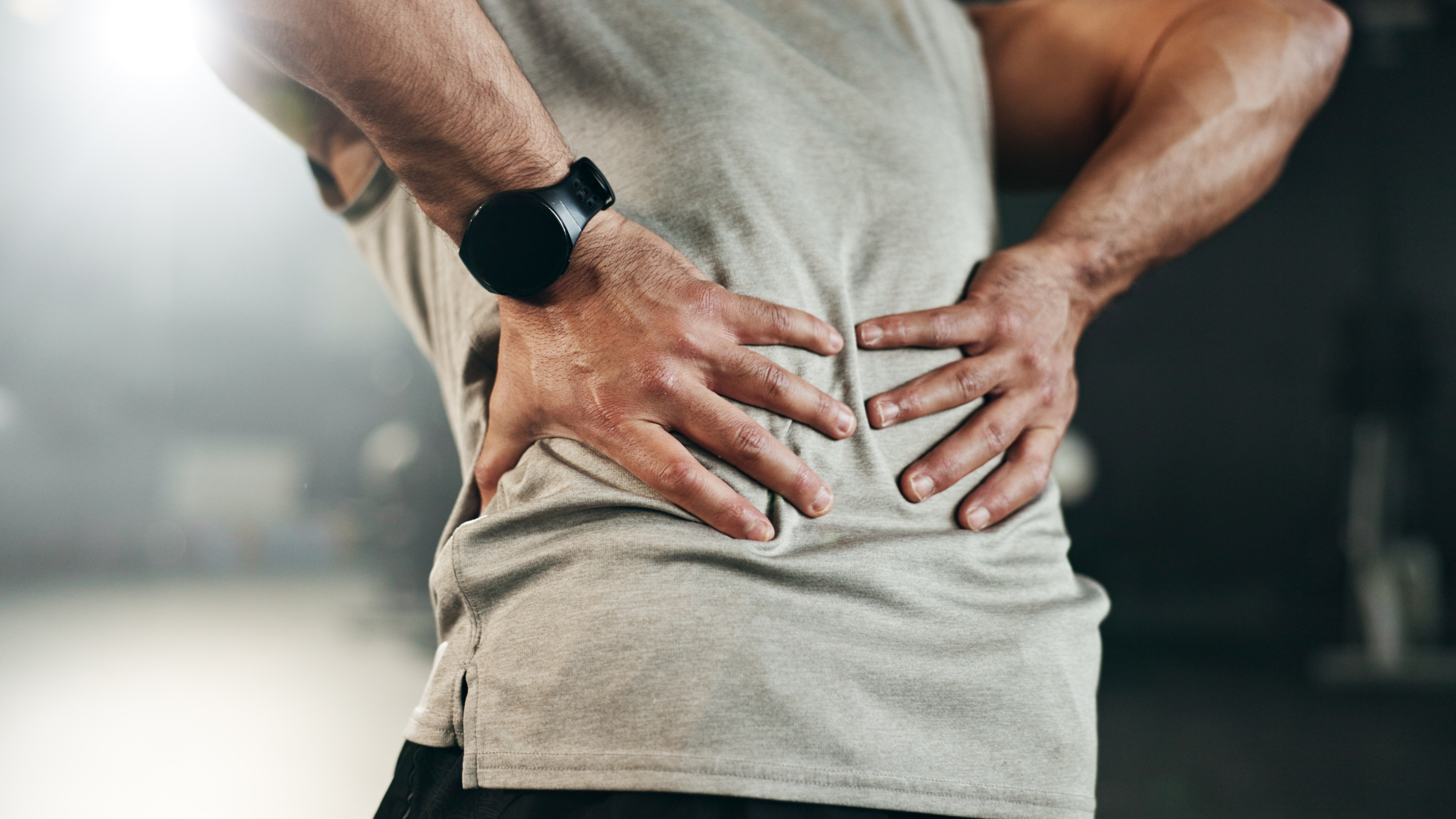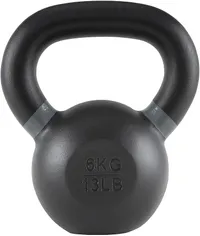I asked a chiropractor how to fix my posture, and they recommended this one exercise
Protect your back and improve posture with one simple squat

If your back feels tight or achy by the end of the day, you know how frustrating it can be. I often catch myself with rounded shoulders and a stiff lower back, and it’s easy to blame sitting, slouching, or a weak core. While all of these play a part, Dr. Dustin DebRoy, a chiropractor, says there’s one habit he sees causing back pain again and again.
“One of the most common habits that contributes to back pain is bending forward at the waist to pick things up,” he explained. Squatting and lifting with your knees instead engages the body’s strongest muscles, the quads and glutes, and takes the strain off your spine. When you bend at the waist repeatedly, it overloads the spinal joints, which over time can lead to irritation, muscle fatigue, and posture imbalances.
Dr. DebRoy recommends the heel-elevated goblet squat to break the cycle. “It strengthens the muscles that support proper lifting mechanics and improves posture, balance, and hip mobility,” he said. If you don’t own a kettlebell but want to work out at home, one from our tried and tested guide to the best kettlebells is a good start.
A kettlebell is perfect for the goblet squat. It offers a secure, ergonomic grip while helping you engage your quads, glutes, and core. This Rage Fitness Kettlebell is a durable, single-cast iron option built to last and is currently 37% off for Black Friday!
How to Perform a Heel-Elevated Goblet Squat
Dr. DebRoy has provided both a video demonstration and step-by-step instructions for the heel-elevated goblet squat, which you can find below. He recommends performing three sets of 10 to 15 repetitions, resting 30 to 60 seconds between sets, and focusing on maintaining good form rather than rushing through the movement.
1. Set up your heel elevation
- Find two stable objects such as thick books, weight plates, or a 2x4 to rest your heels on.
- Start with an elevation of 2 inches and adjust as needed for comfort and balance.
- The higher the elevation, the easier it will be to achieve a deeper squat.
2. Hold your weight
- Choose a weighted object such as a dumbbell, kettlebell, or a gallon of milk.
- Hold it close to your chest with your hands under the object and your elbows tucked in.
- Keep your chest tall and your shoulders slightly pulled back.
3. Brace your core
- Engage your abdominal muscles by gently pulling your ribs down toward your pelvis.
- Keep your back tense and stable, as though preparing for a light push to your stomach.
- This helps protect your spine throughout the movement.
4. Position your feet
- Stand with your feet about hip-width apart.
- Your heels should rest on the elevated surface, and the balls of your feet and toes should remain firmly on the floor.
5. Lower into the squat
- Slowly lower your body by bending your knees and hips at the same time.
- Keep your torso upright and your chest facing forward.
- Control the descent, taking about three seconds to reach the bottom position, ideally when your thighs are parallel to the floor or slightly below.
6. Rise back up
- Press your feet firmly into the floor and drive through your legs to return to standing.
- The ascent can be a bit faster, about one to two seconds, but should still feel controlled.
- At the top, re-engage your core and posture before beginning the next repetition.
You don’t need to use a kettlebell or any weight when you first try the heel-elevated goblet squat. Starting with just your body weight will allow you to focus on proper form and build strength safely. Once you’re comfortable, you can gradually add some form of weight (whether that be a kettlebell, a dumbbell, or just one of the best resistance bands) to challenge your muscles.
It’s also always a good idea to have a professional check your form, especially if you’re new to squats or have a history of back issues.

Follow Tom's Guide on Google News and add us as a preferred source to get our up-to-date news, analysis, and reviews in your feeds.
Get instant access to breaking news, the hottest reviews, great deals and helpful tips.
More from Tom's Guide
- Bad knees? A trainer swears by these 7 moves for building full-body strength after 70
- No, not sit-ups — a trainer says these 5 moves build deep and functional core strength for anyone over 50
- 5 simple tips a Pilates instructor wants every beginner to know

Jessica has been a fitness writer at Tom’s Guide since 2023, bringing three years of experience writing about health, fitness, and the great outdoors. Her passion for exercise began during her childhood, where she spent weekends hiking and competing in local athletics club events. After earning a master’s degree in journalism from Cardiff University, Jessica found the perfect way to combine her love of storytelling and fitness into a career.
Jessica is passionate about testing fitness gear and tech, using her reviews to help readers make informed buying decisions. She ran her first marathon in April 2024, finishing it in 3 hours and 48 minutes. Through her training, she’s developed a deep understanding of what it takes to grow as a runner, from effective workouts and recovery techniques to selecting the right gear for every challenge.
When she’s not at her desk, Jessica enjoys spending time in the kitchen crafting new recipes, braving cold water swims and hiking.
You must confirm your public display name before commenting
Please logout and then login again, you will then be prompted to enter your display name.

